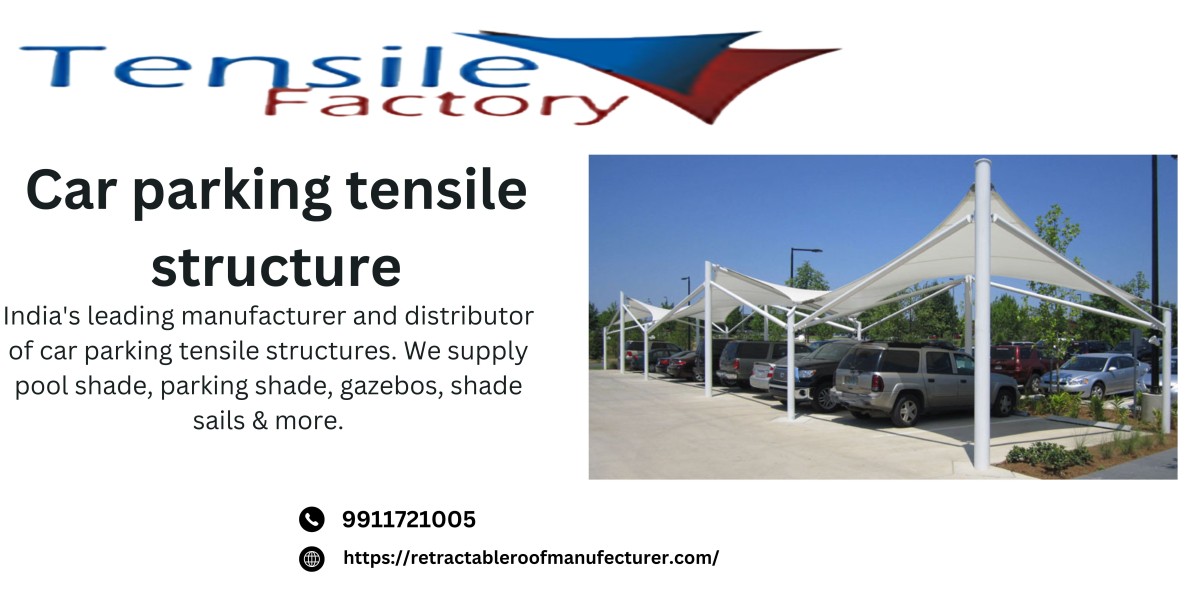Innovations in parking solutions have led to the development of tensile structure car parking, offering a blend of functionality, aesthetics, and sustainability. This article delves into the concept of tensile structure car parking, exploring its benefits, design aspects, and practical applications.
Advantages of Tensile Structure Car Parking
Tensile structure car parking offers a range of benefits that make it an attractive choice for modern parking needs. From cost-effectiveness to environmental sustainability, here are the advantages:
Cost-Effectiveness
Tensile structure car parking systems are cost-effective compared to traditional concrete structures. They require less material and construction time, resulting in lower overall costs.
Design Flexibility
The design flexibility of tensile structures allows for creative and customized parking solutions. These structures can adapt to various spaces and architectural styles, offering versatility in design.
Sustainability
With a focus on sustainability, tensile structure car parking utilizes recyclable materials and promotes energy efficiency. Green roofing options can be integrated, contributing to environmental conservation.
Space Optimization
Tensile structures maximize space utilization, providing more parking spots in limited areas. This efficiency is crucial in urban settings where space is at a premium.
Aesthetics
The aesthetic appeal of tensile structures enhances the overall look of parking facilities. These structures can be designed to complement surrounding landscapes and architectural themes.
Durability and Maintenance
Tensile structures are durable and require minimal maintenance compared to conventional parking structures. Their resistance to weather elements and longevity make them a practical choice.
Design and Implementation of Tensile Structure Car Parking
Structural Components
Tensile structure car parking comprises key components such as membranes, support systems, and foundations. The design ensures structural integrity and safety for vehicles and users.
Membrane Materials
The choice of membrane materials influences the performance and aesthetics of tensile structures. Options include PVC, PTFE, and ETFE membranes, each offering unique features.
Engineering Considerations
Engineers consider factors like wind load, snow load, and seismic conditions during the design phase. Advanced modeling techniques ensure structural stability and compliance with safety standards.
Installation Process
The installation of tensile structure car parking involves precise assembly and tensioning of membranes. Experienced professionals ensure accuracy and quality throughout the process.
FAQs about Tensile Structure Car Parking
Q: What are the main advantages of choosing tensile structure car parking?
A: Tensile structure car parking offers cost-effectiveness, design flexibility, sustainability, space optimization, aesthetic appeal, durability, and low maintenance.
Q: How does tensile structure car parking contribute to sustainability?
A: Tensile structures use recyclable materials, promote energy efficiency, and can incorporate green roofing options for environmental conservation.
Q: What are the key components of a tensile structure car parking system?
A: The components include membranes (PVC, PTFE, ETFE), support systems, and foundations, ensuring structural integrity and safety.
Q: What factors are considered during the design of tensile structure car parking?
A: Engineers consider wind load, snow load, seismic conditions, and modeling techniques to ensure structural stability and compliance with safety standards.
Q: How does tensile structure car parking optimize space utilization?
A: Tensile structures maximize parking spots in limited areas, making them ideal for urban settings where space is limited.
Q: Is maintenance required for tensile structure car parking?
A: Tensile structures are durable and require minimal maintenance compared to traditional parking structures, reducing long-term costs.
Conclusion
Tensile structure car parking represents a modern and sustainable approach to parking solutions. Its advantages in cost-effectiveness, design flexibility, sustainability, and space optimization make it a preferred choice for urban developments. By understanding its design, benefits, and implementation, stakeholders can make informed decisions for efficient and aesthetically pleasing parking facilities.
Retractableroof manufecturer
1 Blog posts



